These Days it’s All About Rubbish. There’s Recycling, Downcycling, Precycling and the Buzzword of the Moment, ‘Upcycling’.
If it hasn’t quite entered your consciousness just yet, then it will do soon – and in a very big way. Simply defined it is the reuse of discarded objects or materials in such a way as to create a product of higher quality or value than the original. Of course this thrift based activity has always existed as the means of production on a modest cottage industry level since time immemorial, like the tradition of quilting that in Europe goes back to the Crusades in the 12th century. It is only in recent times however that upcycling as a viable commercial market has taken off quite so impressively in both breadth and scale, ranging from upcycling clothes to upcycling furniture and even upcycling art.
This simple homespun idea has captivated a growing international countercultural community that has become politicised in its effort to challenge capitalism with an alternative, circular economy of zero economic growth and zero waste, based on thrift, self reliance and localism. On a fundamental level upcycling is tapping into a collective psychology that is disturbed by the ravages of our wastefulness, and mindful of the dangers that we and anything else on this planet with a heartbeat may drown or choke on the growing ocean of our own shit; mindful also of the excesses of consumer culture – not only it’s vanity, vulgarity and selfishness, but also its downright inequitable offensiveness; and attracted to the hyper-evolved folksy wisdom implicit in the notion of ‘make-do-and-mend’.
But you don’t have to be a revolutionary to be an upcycler – though at the very least some lip service needs paying to a loose set of underlying ethics. The business opportunities offered by the low start up costs and overheads, and the endless and growing supply of rubbish, have proved very tempting to the vast number of entrepreneurs that have piled into this activity. Combine all that with the sense of conscience that upcycling masterfully taps into, that you are doing something useful and worthwhile, and assuaging your consumer guilt whilst simultaneously turning a healthy profit – and obviously this concept is going to be a winner. And so it is proving to be. The number of products for example on the online market place Etsy tagged with the word “upcycled” increased from about 7,900 in January 2010 to nearly 30,000 a year later—an increase of 275%. By April 2013, that number had shot up to 263,685, a whopping additional increase of 879%.
Upcycling clothes, furniture, art and lives
This burgeoning niche business practice slots into the already well established sustainability market that is turning a cost into an opportunity, as environmental awareness is being embraced by consumers, governments – wielding both carrots and sticks – and shareholders alike. And the opportunities have not been lost on the fashion world either. Earlier this year the celebrity musician, and man-of-the-moment Pharrell Williams, launched a collaborative denim collection with G-Star Raw made from waste plastic from the ocean, called Raw For The Oceans. Williams has taken on the role of creative director at New York based Bionic Yarn which transforms fibres from the plastic into durable textiles, and he is also co-designer for the G-Star collection. The combination of well-designed sustainable upcycling and cool celebrity endorsement, may prove to be irresistible.
Whether this venture will make a blind bit of difference to ocean plastic is of course another matter. The entire range utilises only 9 tons of ocean plastic and may in any case once again end up back in the ocean, in an ironic form of recycling. The fact is that when in excess of 265m tonnes of plastic are produced globally each year and 10% of that ends up in the ocean, even if every article of clothing in the world – let alone jeans – were made of ocean plastic, the effort would still be, well… just a drop in the ocean.
On the other end of the market for formal clothes made from fine materials, London based Sir Plus is also upcycling clothes though this time from ‘cabbage’ – not the vegetable but the industry name for the off-cuts and surplus fabric that ends up on the factory floor. Fine silks, high-thread cottons and cashmere normally destined for landfill are fashionably refashioned into luxurious dressing gowns, waistcoats and Nehru jackets. University graduate Henry Hales is in no doubt that the upcycling story behind the brand is the real secret of his success.
Upcycling has also historically proved fruitful in the production of both buildings and major engineering projects. Masons and architects have forever upcycled materials from the very earliest civilisations, often using the ruined remains of one building to make another. On a recent trip to Cyprus, I discovered that the British had systematically harvested a vast quantity of the uncatalogued remains of ruined classical civilisations all along the Cypriot coastline, in order to build the Suez Canal in the second half of the 19th century. Both architects and interior designers ‘reclaim’ or upcycle older materials to achieve character through borrowed patina, often accompanied by faux-ageing techniques.
All over our cities young creatives are enthusiastically setting up shop and breathing new life into old junk. In fact these days the number of upcycling shops up and down a high street is one of the clearest indicators of impending gentrification, along with cafes selling lemon poppy seed cake. Recognising that the fashion for granny’s unlovely brown furniture is now long gone, they busily paint them chalky off-white, reinventing reproduction-regency into a more amenable cool Gustavian or warm Provençal, with the deft stroke of a brush. Hey presto…. something soaked in character and rich in patina that’s perfect set off against the mid-century modern coffee table and Marcel Wanders chair.
Now some clever designers including the husband and wife team James Russell and Hannah Plumb, known simply as JamesPlumb, are inventively upcycling furniture at the cutting edge of design. This talented couple first came to prominence with Sampson, a wooden dog on wheels refashioned from a child’s toy and lots of other bits and pieces, with a light instead of its head. From this successful – if perhaps unlikely start – they have been much in demand, wowing Milan with their upcycled ‘Assemblages’ of decrepit antiques, which in an effort to distance themselves from the hitherto downmarket image of upcycling, they choose to call ‘reappropriation’. Their exceptional interior design of the ultra cool men’s and women’s wear boutique Hostem in fashionable Shoreditch – a shrine to both upcycling and reclaiming – has now firmly placed them on an upward trajectory. Read our editorial: Seamless Synergies At Shop Design Sensation Hostem)
Taking things further, the transformative possibilities of even upcycling peoples’ lives through the practice of upcycling their furniture is admirably embraced by the Shepherds Bush based charity Petit Miracle Interiors, whose mission is to assist the homeless, unemployed and also vulnerable women “to explore and understand the process of interior design, develop their own DIY skills and use upcycling as a vehicle to improve their living environment, to build confidence, to reduce social exclusion and provide opportunities for further training and employment.” Like an inexorable self-fulfilling prophesy, the formerly modest cottage industry activity of upcycling appears set to upcycle even itself into a noble and even spiritual credo or apotheosis.
Art – upcycling at its most dramatic
The hands down most dramatic expression of upcycling anywhere has undoubtedly been in the art world, where conceptualists and Dadaists have been making hay with it since Marcel Duchamp displayed a simple urinal at the Society of Independent Artists in 1917. This process has spectacularly culminated with the ‘Young British Artists’ and in particular Damien Hirst’s shark in formaldehyde, that in 2004 sold for in excess of $8m; and of course Tracey Emin’s unmade bed, complete with soiled underwear, that earlier this year achieved £2.2m – which is probably the best possible illustration of the old adage about ‘money for old rope’.
The art world may choose their own jabberwocky, preferring ‘ready mades’, ‘appropriation’ or ‘transforming found materials’, but it’s quite simply upcycling – but on an unimaginable scale. The vexing question of course is how such a folksy homespun practice could have spawned Damien Hirst, the most financially successful artist in world history? Moreover how could it have been responsible for an art form which, with it’s open embodiment of financial value, is the very negation of the ethical underpinnings of upcycling? But then there always will be a fly in the ointment won’t there?
It’s not all bad though. African artists, tapping into impoverished local folk art traditions that have always made art out of rubbish, have been particularly prominent in upcycling art, with extraordinary success stories like El Anatsui, with his mesmerisingly beautiful bottle-top curtains, that elegantly drape over buildings and ironically surpass in opulent effect the most expensive of materials. Meanwhile West African Romuald Hazoumé, who mimics traditional African masks that he crafts out of old plastic canisters, delights in first upcycling then sending back to the West the very rubbish that we have dumped on his continent: “I send back to the West” he says “that which belongs to them, that is to say, the refuse of consumer society that invades us every day.” There’s certainly a kind of justice in that.
Where there’s muck there’s brass
Is it too fanciful to ponder on the possibility that we too are the products of a numinous upcycling, powered by forces larger than our science or imagination can adequately explain? Let’s consider for a moment how the total number of atoms on our planet are fixed – barring the odd meteorite landing. The implications of this are that the atoms of your body were once the atoms of a star, a dinosaur, a piece of shit, a rose bush, a great philosopher and a psychopathic mass murderer. But is this ‘upcycling’, ‘downcycling’ or just a neutral ‘recycling’? These are just human value judgements of course, that are of no value to anyone or thing other than ourselves. So who cares… apart from us, these short lived neurotic beings floating around on a little blue planet in an infinite expanse of matter? You have to marvel at our vanity though. In the grand scheme of things it wasn’t that long since we were swimming in the primordial soup with all the other low-life forms, and now as in Shelly’s sonnet, we loudly proclaim: ‘My name is Ozymandias, King of Kings / Look on my works, ye Mighty, and despair!’
Existential digressions aside… it is extraordinary how we are witnessing the dramatic evolution of ‘upcycling’ from a modest, downmarket, low-grade activity into a rapidly burgeoning populist market – the incipient upcycling economy – that can’t be ignored; into mainstream high fashion and design and record-breaking world-class art; and also into a set of ethics or philosophy about the transformative effects not only on the discarded junk around us but on ourselves and ultimately on our planet; and finally into the growth of a new alternative world order challenging the capitalist way of doing things, that may yet have its day. The thing about ‘upcycling’ is that it’s no longer just the battered old tin cup salvaged from a rubbish heap from which to sip the water of wisdom, but the very well spring itself, offering up a world of possibilities and definitively proving that ‘where there’s muck there’s brass’.















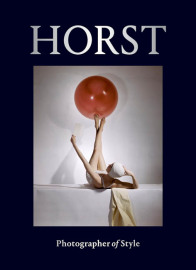


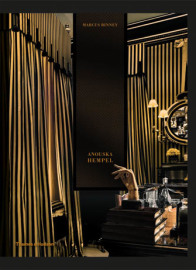
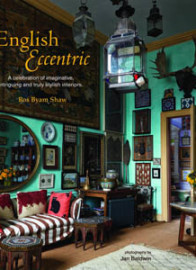
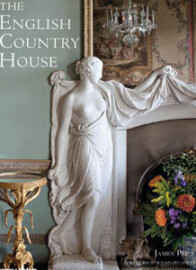

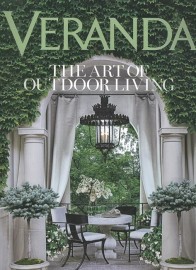

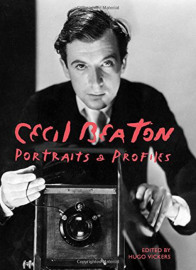
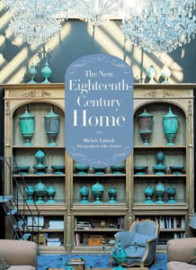

Interesting and provocative read
I saw the exquiste bottle top carpets in Venice in Pinots collection and a friend gave me a beautiful makeup bag made from a black rubbish bag,
having just been to an exhibition in south east London i could certainly recycle several drawings that i had to endure which would be the next great adventure for me!
Bravo x
Susan @Humblepie via Twitter @humblepieshop 2h2 hours ago
@GDCinteriors Excellent read, thanks!
Hamilton, Ontario
UPCYCLING-FASHION.DE via Twitter @upcycling_store
For @GDCinteriors:disqus #upcycling is the #buzzword of the moment! We defenitely agree with them!